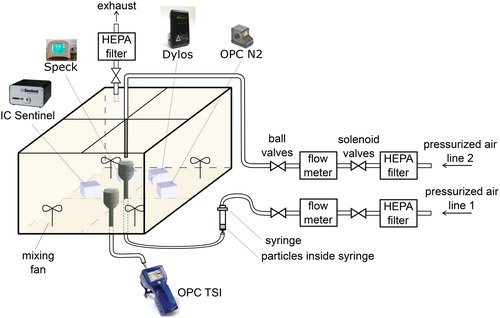Figures & data
Table 1. Summary of the tested particle sensor characteristics.
Figure 2. Particle size distribution of tested polydisperse particles during the first minute of particle injection measured by the reference sensor (AeroTrak, TSI): (a) dust mite, (b) pollen, (c) cat fur, (d) dog fur, and (e) quartz.
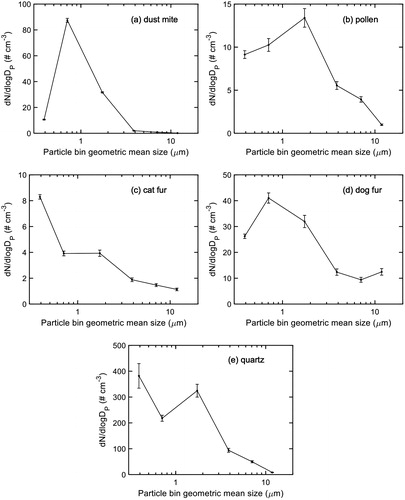
Table 2. Summary of the tested particles.
Table 3. Tested sensors’ size bins representing particles smaller than 2.5 µm.
Figure 3. Time-series of dust mite particle number concentrations for the size range <2.5 µm measured by four low-cost sensors and the reference sensor. The test consists of three phases; 1) background level (minutes 0–5), 2) particle injection (minutes 5–7), and 3) particle concentration decay (minutes 7–150). Note that other test cases with different particle types and sizes had fairly similar temporal concentration profile trends.
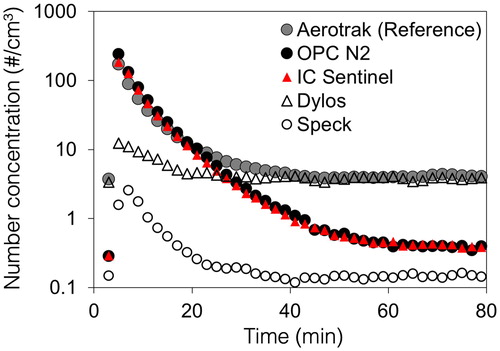
Figure 4. Particle number concentrations measured by low-cost sensors (y-axis) versus the reference sensor (x-axis). Subplots in the left column (a, c, e, and g) represent the non-linear response region (0–5/cm3). Subplots in the right column (b, d, f, and h) represent the linear response region.

Table 4. Summary of regression analysis results for four tested bioaerosols comparing each low-cost sensor to the lab-grade sensor.
Figure 5. The response of low-cost sensors under exposure to biological (a, c, e, and g) and non-biological (b, d, f, and h) aerosols with respect to the reference sensor.
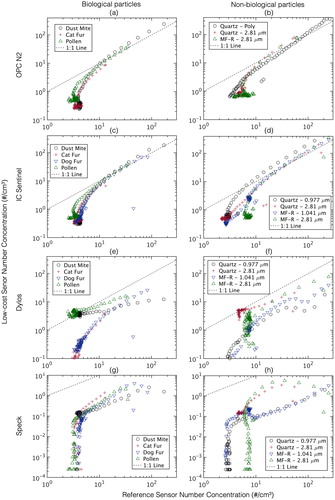
Figure 6. Regression analysis results of the low-cost sensors with respect to the reference sensor under exposure to common indoor bioaerosols. (a) Slope (proportional bias), (b) intercept (fixed bias), (c) R2 (linearity), and (d) RMSE (calibration precision). Please note that this plot does not include repetition tests. A similar plot that includes the regression results of the 2 repetition tests for dust mite particle is presented in Figure S3in the SI.
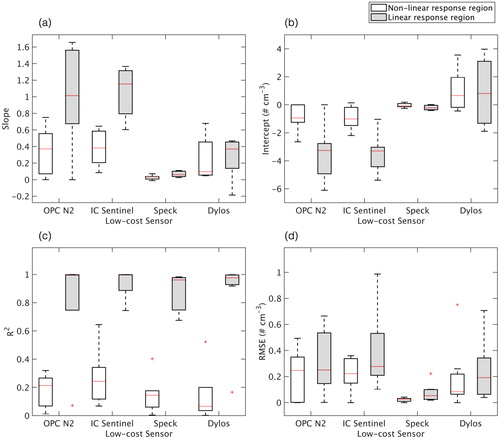
Table 5. Variation of the linear regression slopes of low-cost sensors response versus the reference sensor among different repetitions of three test particles.
Table 6. Linear calibration equations developed from tested bioaerosols (dust mite, pollen, cat fur, and dog fur) of smaller than 2.5 µm in concentrations of 5–20/cm3.

